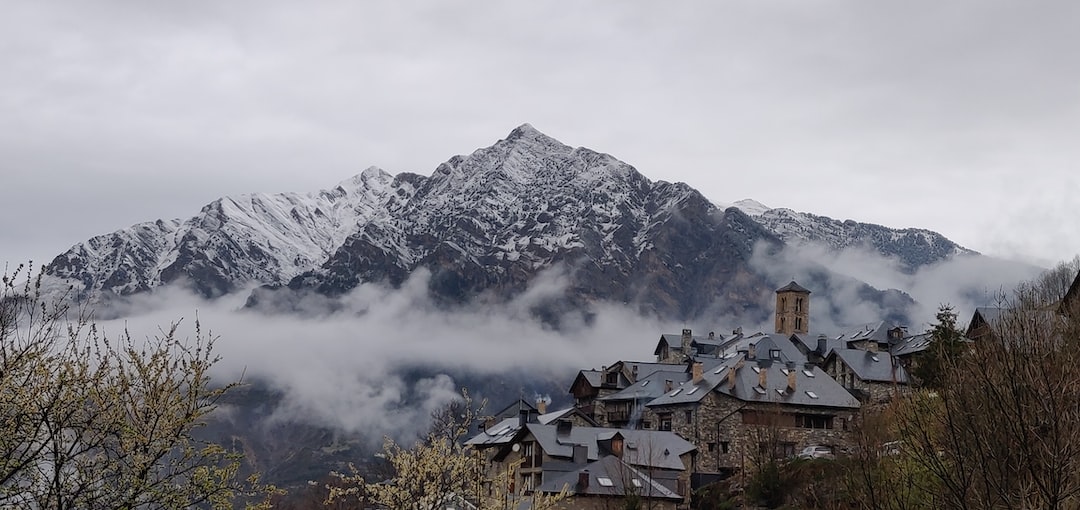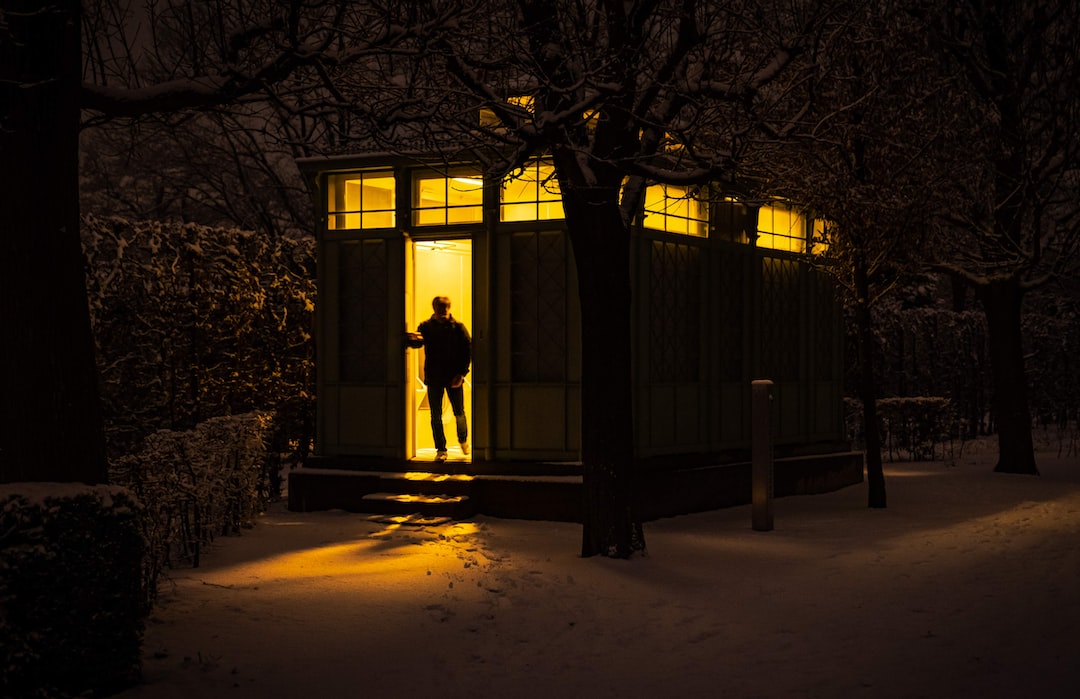Yo, strap in because we’re about to take a deep dive into something that hits different: cultural identity. For real, in a world that’s getting increasingly globalized, where TikTok trends hop across borders faster than your Wi-Fi, it’s kind of wild to think about where our traditions fit in. I mean, do they even matter anymore when everyone’s talking about metaverses and NFTs? Spoiler alert: They do, and in some major ways. So, let’s get comfy and break it all down—from the lit vibes of holding onto traditions to the low-key stress of navigating culture in a world that’s constantly changing. 🧠💫
Cultural Identity: What We’re Even Talking About
Alright, let’s start with the basics. What even is cultural identity? It’s like your personal playlist, but instead of tracks, it’s a mix of all the influences that make you, well, You. It’s your heritage, the values you grew up with, the languages you speak (or don’t), the food you eat, the holidays you celebrate. This stuff isn’t just superficial. It’s like your default mode, the vibe that permeates everything you do.
Cultural identity contributes to your sense of belonging. Think about it. You’re in a room full of strangers, but then something happens—maybe someone references a meme that everyone’s obsessed with back home, or a song from your culture starts playing. Suddenly, you don’t feel so out of place anymore. That’s cultural identity in action, connecting you to something bigger, something that feels like home even when you’re far away.
The thing is, your cultural identity doesn’t just materialize out of thin air. It’s passed down through generations. It’s influenced by your fam, your community, and even the stuff you consume—yes, the books, the YouTube channels, the influencers who stole your heart and your data. But, more importantly, it’s deeply rooted in traditions. And we’re not just talking about big holiday vibes like Thanksgiving or Diwali, but everyday things: how you speak, what you eat, your manners, and the way you look at the world.
So, when we say ‘tradition,’ we mean the cultural practices that have been handed down, the conveyor belt of stuff that’s been making its way through history to you. But here’s the clincher: Unlike that TikTok trend that dies after a week, traditions stick around—they’ve got staying power. And the more globalized the world gets, the more essential these traditions become.
The Role of Tradition in Shaping Identity
Now let’s get into it—why are traditions so crucial in shaping cultural identity? Think of traditions like the DNA of culture. They encode specific behaviors, beliefs, and rituals that define what it means to be part of a particular group. Part of the squad, if you will. Whether it’s celebrating Lunar New Year with your family or passing down that secret family recipe, traditions play a key role in how you see yourself—and how others see you.
Traditions give us a sense of continuity. They anchor us in a sea of constant change. Stability? In this economy?? Yes, seriously. 😂 Take a moment to think about how some traditions help families and communities weather the chaos of modern life. Despite how much the world around us evolves, traditions offer that familiar rhythm, a steady beat, in a very unpredictable playlist. When everything else is in flux, they’re the constants that help us maintain some kind of balance.
Plus, traditions are the original how-to guides for navigating life. They teach us when to celebrate, mourn, and even how to deal with life’s everyday struggles. And that’s not all. They come pre-packaged with meaning and shared values. When we partake in these traditions, we’re not just performing a ritual; we’re aligning ourselves with centuries of collective wisdom. We’re tapping into the knowledge that our ancestors passed down—sometimes literally through stories or songs, and sometimes more subtly, through the rites and rituals we’ve been doing "because that’s just what we do."
But traditions aren’t just about big life events. They can be as simple as the morning coffee routine you inherited from your mom or dad. Over time, these seemingly small rituals accumulate, threading through your daily life until they become a part of who you are. It’s not just about the action itself. It’s about the connection to something bigger than yourself—to your roots, to your fam, to your culture. That sense of continuity and shared purpose can be a powerful thing.
Globalization: The Mashup That Isn’t Always a Bop
Here’s where things get tricky. Globalization has changed the game, big time. It’s like, imagine every culture’s traditions as unique playlists, each one telling a different story. Now, globalization comes along like a DJ at a mega-rave, mixing all these tracks together. At first, it’s a total vibe—new sounds, new beats, everything feels fresh and international. But, as the music keeps playing, you start to notice the original tracks fading out, woven into a loop of something that’s not quite the same.
The same thing’s happening in the world. Globalization has, no doubt, done wonders for us: faster communication, shared experiences, access to different parts of the world—who knew you’d be a BTS stan from your bedroom in Ohio? But, like that DJ set, it also poses a risk. We could lose the original tracks—the unique cultural traditions that give us our identity.
This leads to a phenomenon called cultural homogenization, which sounds fancy but isn’t all that cool. 🤷♂️ It’s when cultures begin to blend so much that it becomes tough to differentiate between them. If every culture’s traditions start blending into one global mix, do we lose the rich diversity that makes each group unique?
Don’t get it twisted, though: there’s also something low-key awesome about how globalization allows cultures to interact and learn from each other. Like, Quidditch for real took off in the Muggle world, right? And movies like "Crazy Rich Asians" opened up new layers of media representation. But even so, a delicate balance must be maintained. We’ve got to find a way to embrace these global influences without completely erasing our OG identities.
The Push AND Pull: Assimilation vs Preservation
So let’s pause for a sec to think about the tug-of-war we go through—another thing that globalization has kind of dragged into the spotlight. On one side we have assimilation, the process where individuals or groups gradually adapt to the dominant culture. It’s kind of like swapping out your distinctive Insta aesthetic for something more mainstream because, well, that’s what everyone else is doing. You blend in, maybe to feel more accepted, maybe to avoid a sense of alienation, or maybe just because you dig the new aesthetic.
Assimilation doesn’t have to be a bad thing. Sometimes it’s low-key empowering. Like how many first-gen immigrants learn the language of their new country to fit in better or find work. The catch? When everyone’s hopping on the same cultural bandwagon, we might lose some of the dope diversity that makes individual cultures pop. Like, would SZA even hit as hard if she didn’t bring her unique, unfiltered vibe to her music?
On the flip side, there’s preservation—holding on to cultural traditions, even when they don’t exactly gel with mainstream culture. It’s about keeping those OG roots firm. It’s refusing to give up your grandma’s cooking, even if it smells a little funky to your roommates. It’s choosing to wear traditional clothing as a loud and proud fashion statement. It’s that extra scoop of masala in your life when everyone else is worried about it being “too spicy.” Preservation is cool because it holds space for your true self, your heritage, and your original playlist.
But here’s the thing: living in a globalized world often means walking a fine line between these two behaviors. You may feel torn between wanting to blend in with the larger group while still holding on to what makes you, you. And that’s a real struggle for many, especially younger people who feel stuck between the values of older generations and the new world that’s emerging around them.
Mixed Signals: When Tradition Clashes with Modernity
Let’s talk about those moments when it feels like your traditions are straight-up clashing with modern life. We’ve all been there—caught between generations, trying to make everyone happy while living your best 2023 life. 😅 But unlike the easy rhythms of a lo-fi playlist, reconciling these differences can get messy, real fast.
Take, for example, traditional gender roles. 👀 If your culture values men and women having specific duties or behaviors, you might find it hard to align this with feminist values that celebrate equality and empowerment. Or maybe your culture places a lot of importance on family and elders, but here you are, trying to explain why you need to prioritize self-care and mental health—something our ancestors might not always get. These are just a couple of examples, but you get the idea: traditional values and modern ideals don’t always vibe.
Then there’s the generational divide—like, how do you convince your grandparents that your career as a content creator is legit when all they know is that “doctor-lawyer-engineer” life? You might want to honor your family’s traditional expectations, but at the same time, you don’t want to give up on your own dreams and life choices. This tension has a lot of people feeling stretched thin between competing cultural demands.
But don’t hit pause yet. We’re not here to say that these two worlds are incompatible. Actually, some of the most radical and meaningful changes happen when traditions and modernity collide. Think about the rise of “fusion” food (Korean BBQ tacos, anyone?), or how festivals like Holi have found new life worldwide, blending in modern music and activities while holding onto the essence of the tradition. What we’re really digging into is how this clash can sometimes feel like more of a low-key identity crisis.
Let’s break down a few strategies for navigating these tricky waters:
Take What Resonates and Leave What Doesn’t
This is the classic buffet approach. Choose the traditions that resonate with you and genuinely add value to your life. Leave the rest behind guilt-free. You don’t have to be chained to every tradition just because it’s part of your cultural DNA.
Hybridize
Why not create a new fusion? Take elements from both traditional and modern worlds and mold them into something that reflects your own unique flavor. Let’s say you love your culture’s traditional music but vibe more with modern beats—start a playlist that mashes them up. This goes for everything from holiday celebrations to fashion, food, and even values.
Start the Conversation
Yeah, talking things out can be awkward, but it’s a lot better than silently stressing. Sit down with your fam or community and hash it out. Let them know why some traditions don’t jive with your current life, and explain what modern concepts mean to you. You’ll be surprised how many people are open to change once they understand where you’re coming from.
Own It with Confidence
Whatever cultural mix you pick—own it! Don’t let anyone get you down for navigating your cultural identity in a way that feels right to you. Walk that runway with swagger, knowing that the blend of old and new is authentically you.
The Importance of Reclaiming Tradition
Alright, let’s switch it up—what about when traditions have been kind of forgotten, erased, or suppressed? Enter the concept of cultural reclamation. Reclaiming cultural traditions is like digging through the crate of forgotten tracks and remixing them into something today’s audience can vibe with. 🖤
Imagine folks from marginalized communities who were forced to suppress their cultural practices due to colonization, racism, or religious persecution. For them, reclaiming tradition is a form of resistance. It’s not just about enjoying the vibe of yesteryear; it’s about taking back control, asserting identity, and offering a counter-narrative to mainstream culture. It’s saying, “Hey, we’re still here, and we’re still thriving.” And that’s powerful.
Take Indigenous people, for example. Many Indigenous communities around the world are working hard to reclaim their language, customs, and rituals after years—sometimes centuries—of being systematically stripped of these practices. Whether it’s through storytelling, ceremonies, or teaching younger generations their nearly-lost languages, these acts of reclamation are essential for maintaining both cultural identity and community survival.
This brings us to an important point: personal identity is intrinsically linked to collective history. By reconnecting with ancestral knowledge and practices, people aren’t just returning to something old—they’re also creating a renewed sense of community and pride. It’s an action that challenges the narratives of erasure and invisibility, making tradition a tool for empowerment in the modern world.
And it’s not just for the people who lost traditions. There’s something in this for everyone. Even if it’s from a place of privilege, reclaiming lost, forgotten, or neglected traditions can be a transformative experience. When you dive deep into your roots, you often discover aspects of your identity that were waiting to be unlocked. Learning about your origins and practices opens up a treasure trove of wisdom, making you hyper-aware of who you are and where you come from.
Keeping Culture Alive in a Digital World
So how does culture stay alive in a world where everything’s going digital? Let’s face it, Gen Z—the “digital natives”—we live half our lives online. 🌐 Instagram, TikTok, Discord, streaming—all of this isn’t just affecting how we communicate; it’s changing how culture evolves and is preserved. But don’t sleep on this—digitizing culture isn’t necessarily an L. In fact, it’s kind of a W if you think about it.
We’re already seeing cultures adapt to the digital age. Livestreams of ceremonies, traditional dance challenges on TikTok, meme templates tied to cultural humor—these aren’t trivial; they’re modern rituals. They may look different, but they play the same role—connecting people to their roots and allowing them to share their identities in new, creative ways.
Here’s some real talk: creating digital spaces where culture is celebrated is one of the most powerful ways to ensure its survival. Think about virtual communities where people gather to discuss their shared background, host online events, or even pass down oral traditions through podcasting. This shows that no matter how transient our digital communications feel, they serve as tools for sustaining cultural identity.
Moreover, digital platforms can democratize access to cultural knowledge. Want to learn an ancient recipe lost to time or maybe a traditional dance from the other side of the world? It’s a quick search away. You’ve got tutorials, deep-dives, and content capsules that keep these traditions alive. Crowdsourcing and community input also help ensure what was once niche or inaccessible becomes common knowledge for anyone interested.
Wrap your head around this: While it’s easy to romanticize the past and think traditions are losing their essence in modernity, the truth is that they’re evolving faster than ever. People who might have hesitated to engage with their cultural heritage before can find a welcoming, inclusive community online, exploring their roots safely and openly. It’s the intersection of the old world and new, and it’s thriving in this space.
How Globalization is a Catalyst for Cultural Revival
It sounds like a paradox, but globalization—a force widely criticized for homogenizing culture—also plays a surprising role in its revival. Cultural diffusion isn’t just a one-way street where traditions get watered down or lost. It’s also about exchange. And this exchange can breathe new life into long-forgotten practices, making them relevant again.
One dope thing about a globalized world is how cultural practices travel. Concepts that were once geographically confined are now finding new homes in different parts of the world. Yoga, K-Pop, and even holistic health methods like acupuncture are being embraced globally. This widespread adoption doesn’t dilute the culture. Instead, in many cases, it sparks renewed interest in the origins of these traditions, leading to a resurgence in their home countries.
That said, the global revival can sometimes create a myth. The way a tradition is perceived outside its original context can differ widely. It could lead to “mythologizing” certain aspects or using reductionist views that don’t consider its full cultural significance. But when people dig deeper, this initial exposure often turns into a journey of cultural exploration and, ultimately, preservation. It can be the catalyst that pushes people to dive into the depths of the tradition, ensuring it’s not just a passing phase but something that has staying power.
Let’s break this down further: When Westerners get into yoga or meditation, for example, it often starts out as a trend. But as they dive deeper, they might become interested in the philosophies behind it, which leads to a more profound respect and understanding of the culture itself. Meanwhile, people from the culture of origin might see this revived interest and decide to reconnect with these practices themselves, reclaiming what might otherwise be seen as outdated or irrelevant. It’s a feedback loop that works in surprising ways.
Globalization has also reignited interest in cultural festivals, art, music, and fashion from around the world. Some of the best example questions pop up when people shed misconceptions and approach these traditions with open curiosity. The cultural exchange creates a cycle of revival and preservation, making sure these age-old practices get adopted into modern contexts while staying connected to their roots.
Plus, globalization lets different cultures come into dialogue with each other like never before. People across the globe can now celebrate and interact with what would have been processions merely happening in a particular town or country. Events once limited by geography are now shared via live streams and social media, ensuring the culture’s survival in a modern context.
Challenges to Preserving Cultural Identity
All that said, preserving cultural identity in a globalized world isn’t exactly smooth sailing. It’s like trying to keep that vintage fit in perfect condition while everyone around you is obsessed with the latest fashion trends.
First, there’s the issue of language. Your native tongue isn’t just a communication tool, it’s the repository of your culture’s wisdom, humor, and perspective. But when the world is leaning hard into a few dominant languages—like English or Mandarin—smaller languages often get left behind. You might know this if you’ve felt a bit disconnected from your culture because you don’t speak the language as fluently as your grandparents did.
Another challenge is the way capitalism plays a role in how traditions are commercialized. Yup, we’re talking culture vultures. As brands grow more “woke,” they’ve started adopting cultural symbols to sell everything from snacks to sneakers. But this can sometimes lead to cultural appropriation—borrowing elements of a culture without understanding or respecting their significance. It’s vibe-check time; you need to think about whether buying or supporting these brands is adding to cultural preservation or merely exploiting it.
There’s also political tension. In some places, governments impose restrictions or promote certain groups at the expense of others. This forced assimilation poses a real threat to cultural identity. Meanwhile, people caught in warzones, natural disasters, or crises often have to flee their homeland, leaving their traditions, rituals—even their clothes—behind. Once refugees land in another country, they might struggle to hold onto their cultural practices in a place where they’re unfamiliar or even unwelcome.
Lastly, there’s this push towards a hyper-individualist society, where “going solo” seems to be the mode everyone’s in. This can erode the sense of community that is central to many cultural traditions. Joint family structures, community-driven rituals, and collective celebrations are sometimes replaced with more individualized pursuits. While self-discovery is important, the rise of individualism definitely puts cultural continuity to the test.
The Road Ahead: Future-Proofing Culture
Alright, by now we’ve dug deep into the role of tradition in a globalized world. So where do we go from here? How can we make sure culture stays living and thriving, in a world that’s moving rapidly toward convenience, quick fixes, and instant gratification? 🚀
First and foremost, education is key. 👩🏫 Schools, educators, and even influencers can play a massive role in embedding cultural education into the mix. When younger generations are made aware of their cultural heritage right from an early age, they’re less likely to lose touch. That could mean anything from learning your native language to understanding the significance of traditional crafts or rituals.
Communities and families also need to play a role by keeping traditions relevant and accessible. Make it cool again. Engage younger people by showing them how these traditions tie into their modern lives. It’s on all of us to create spaces where people can explore and reclaim these aspects without fear of judgment or ridicule.
Furthermore, embracing technology will be essential for future-proofing culture. Keep the digital vibes rolling, whether through video storytelling, virtual reality showcases, or even creating interactive apps that teach and preserve cultural practices. Technology doesn’t have to be a threat—it can be the ultimate tool to make traditions engaging and accessible to future generations.
FAQ Section
Q1: Why are traditions important in a globalized world?
Traditions act as anchors in a rapidly changing world. They give us a sense of identity, community, and continuity. Even as the world becomes more interconnected, traditions tie us to our roots and offer a distinct sense of belonging. 🌍
Q2: How can younger generations keep traditions alive?
Younger generations can keep traditions alive by embracing them in a way that aligns with modern life. Whether it’s through digital platforms, hybridizing traditional practices with modern ones, or simply by learning and participating in cultural rituals, there are countless ways to make sure traditions aren’t lost. 📲
Q3: What role does the internet play in cultural preservation?
The internet plays a huge role in cultural preservation. It allows instant access to cultural practices from all over the world, and digital platforms can host virtual traditions, cultural exchanges, and even community dialogues that help sustain cultural knowledge in an ever-evolving world. 🌐
Q4: What are the risks of globalization on cultural identity?
Globalization can lead to cultural homogenization, where unique cultural identities blend into one global culture. This can result in the loss of traditions, languages, and rituals that are central to cultural identity. It’s essential to be aware of these risks and find ways to sustain cultural diversity. 🛑
Q5: How can I explore or reclaim my cultural identity if I feel disconnected?
Start by engaging with cultural practices and traditions you’re curious about—whether it’s language, food, or rituals. Join online communities, attend cultural events, or even have conversations with family members about your heritage. Your cultural identity is yours to explore and embrace at your own pace. 🔍
Q6: What happens when traditions clash with modern ideals?
When traditions clash with modern ideals, it creates a tricky balancing act. You may need to flex between honoring your roots and adapting to modern values. It’s about finding a middle ground that respects both, allowing a fluid identity that lets you thrive in the modern world without losing sight of your culture. ⚖️
Q7: How can communities help preserve cultural traditions?
Communities can preserve cultural traditions by actively passing them down through festivals, ceremonies, and educational initiatives. Offering support for cultural expression, hosting events, and integrating traditions in daily life are ways to keep them alive. A united community can foster an environment where culture isn’t just preserved but celebrated. 🎉
Q8: Is it okay to adapt traditions to fit modern lifestyles?
Absolutely! Tradition isn’t about being rigid, it’s about retaining the essence while being flexible enough to stay relevant. Adapting traditions lets them evolve with the times, ensuring they remain meaningful and accessible to new generations. It’s all about creating your own unique blend that resonates with today’s world while honoring your roots. 🧩
Q9: How is cultural reclamation different from cultural preservation?
Cultural reclamation is about rediscovering, reviving, and reinstating traditions that were suppressed, lost, or neglected. It’s an active effort to bring these practices back into the spotlight. Cultural preservation, on the other hand, involves safeguarding existing traditions from fading into obscurity. Both are essential for maintaining a rich, vibrant cultural identity. ✊
Q10: How can globalization contribute positively to cultural identity?
While globalization does pose risks to cultural identity, it also fosters cultural exchange and awareness. By sharing traditions, art, cuisine, and more across borders, cultures can inspire each other, leading to a global appreciation of diversity. At its best, globalization can help preserve and even revitalize cultural identities by giving them a broader platform. 🌎
Sources and References:
- Hall, Stuart. "Cultural Identity and Diaspora." Routledge, 1990.
- Friedman, Thomas L. "The World is Flat: A Brief History of the Twenty-First Century." Farrar, Straus, and Giroux, 2005.
- Smith, Anthony D. "National Identity." University of Nevada Press, 1991.
- Appadurai, Arjun. "Modernity at Large: Cultural Dimensions of Globalization." University of Minnesota Press, 1996.
- Cultural Survival (organization). "Cultural Survival Quarterly." Various Issues.
- Castells, Manuel. "The Rise of the Network Society." Wiley-Blackwell, 1996.




